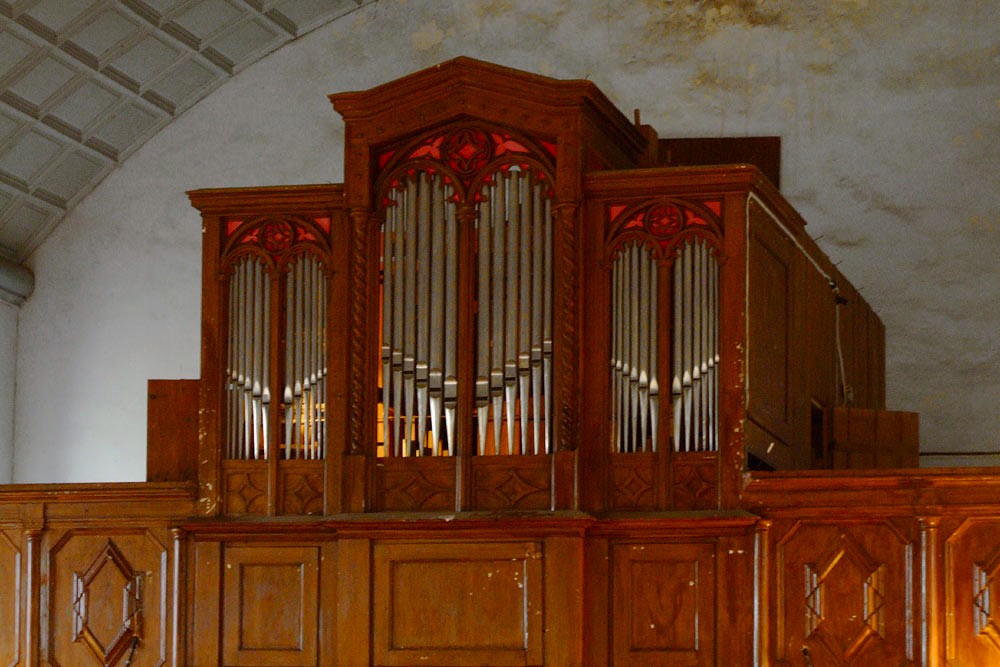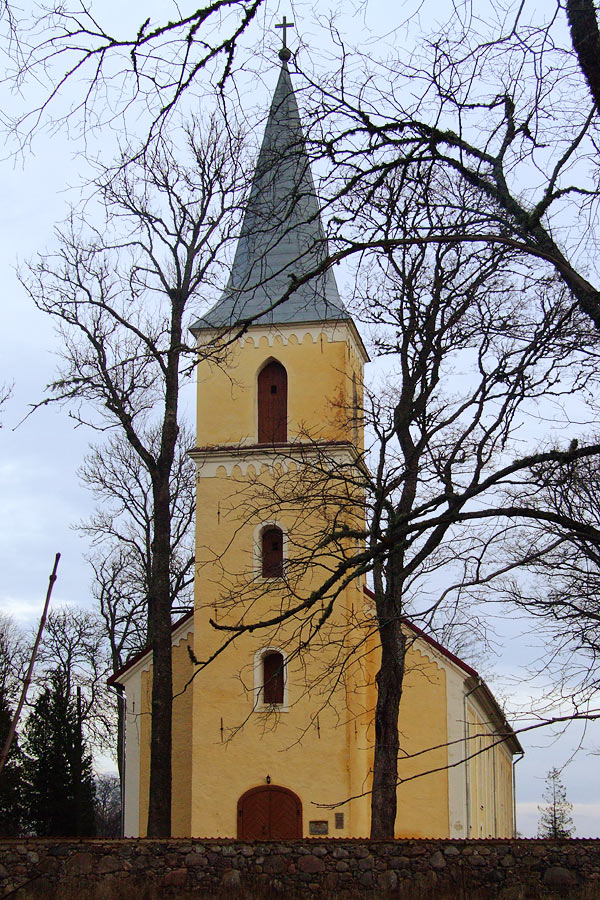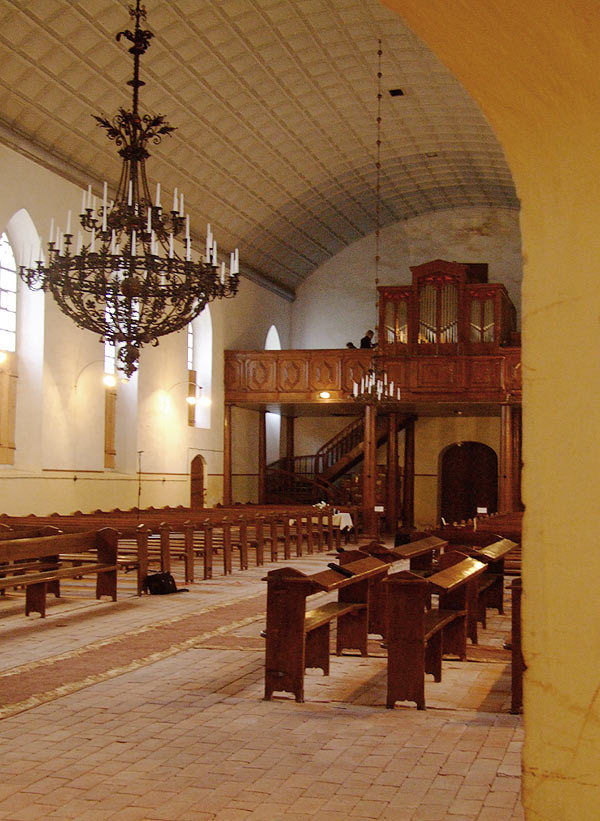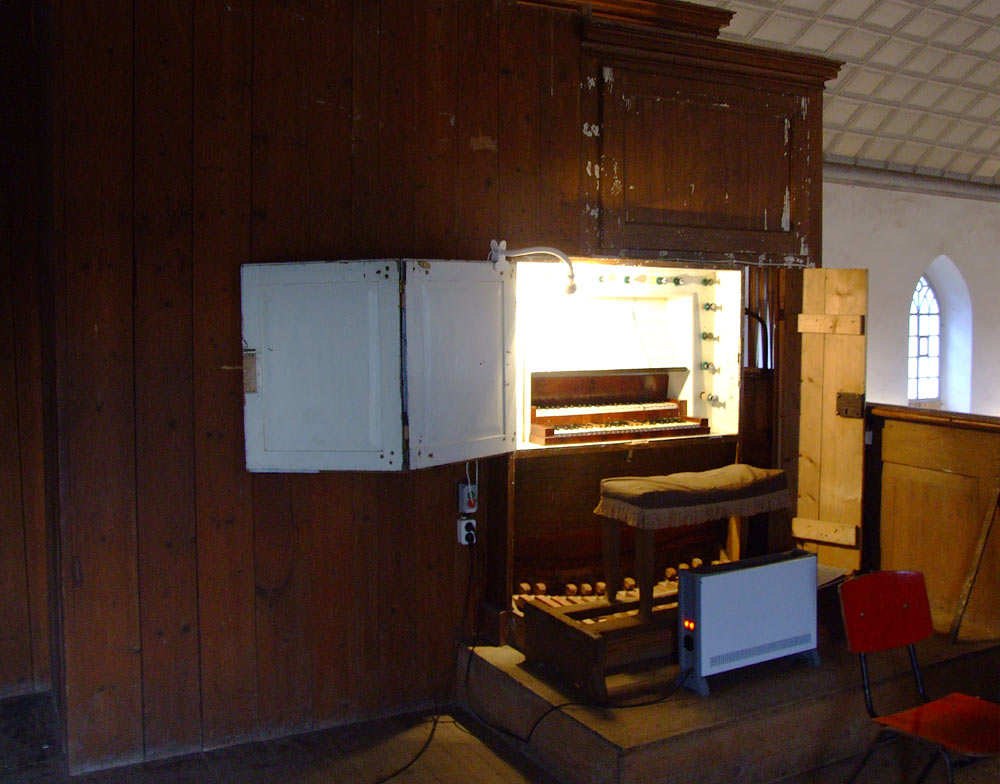Ārlava, Ārlavas evaņģēliski luteriskā baznīca
| Builder | A. Martin |
|---|---|
| Year | ca. 1870 |
| Period/Style | Romantic |
| Stops | 12 |
| Keyboards | 2+P |
| Keyaction | tracker/mechanical |
| Tuning | Equal at 444 Hz |
The organ at the Ārlava church was built by Riga organ builder August Martin in two phases, with the first phase dating back to around 1848 and the second approximately 20 years later, around 1870. An inscription on the case indicates that it was rebuilt by August Martin from Riga. There is also mention that around 1866, F. Weißenborn worked on the instrument, although the exact nature of his involvement is unclear.
Initially, the organ was a single-manual instrument with 6 manual registers and 1 pedal register. Later, a second manual was added while retaining the first manual unchanged. The instrument underwent further modifications over the years, including the addition of new stops and changes to the layout of the pipes inside the case.
In 1939, the organ was cleaned, tuned, and received new pipes from the A. Krans company in Riga. Additional adjustments were made to the organ, including the relocation of the windchests away from the facade. The restoration work in 1999, led by J. Kalniņš from the Ugāle organ workshop, included cleaning, electrical rewiring, and the installation of a new blower and air regulation valve.
Initially, the organ was a single-manual instrument with 6 manual registers and 1 pedal register. Later, a second manual was added while retaining the first manual unchanged. The instrument underwent further modifications over the years, including the addition of new stops and changes to the layout of the pipes inside the case.
In 1939, the organ was cleaned, tuned, and received new pipes from the A. Krans company in Riga. Additional adjustments were made to the organ, including the relocation of the windchests away from the facade. The restoration work in 1999, led by J. Kalniņš from the Ugāle organ workshop, included cleaning, electrical rewiring, and the installation of a new blower and air regulation valve.
| I Manual | II Manual | Pedal |
|---|---|---|
| Principal 8´ | Salicional 8´ | Subbass 16´ |
| Hohlflöte 8´ | Traversflöte 8´ | |
| Gamba 8´ | Hohlflöte 4´ | |
| Oktave 2´ | Flauta piano 4´ | |
| Oktave 4´ | Flautino 2´ | |
| Mixtur 3f |
rk03 Arlava
0:00
0:00
rk01 Arlava
0:00
0:00
tutti
0:00
0:00
https://www.orgcat.lv/arlava_apraksts.htm
 Pipe Organ Map
Pipe Organ Map



